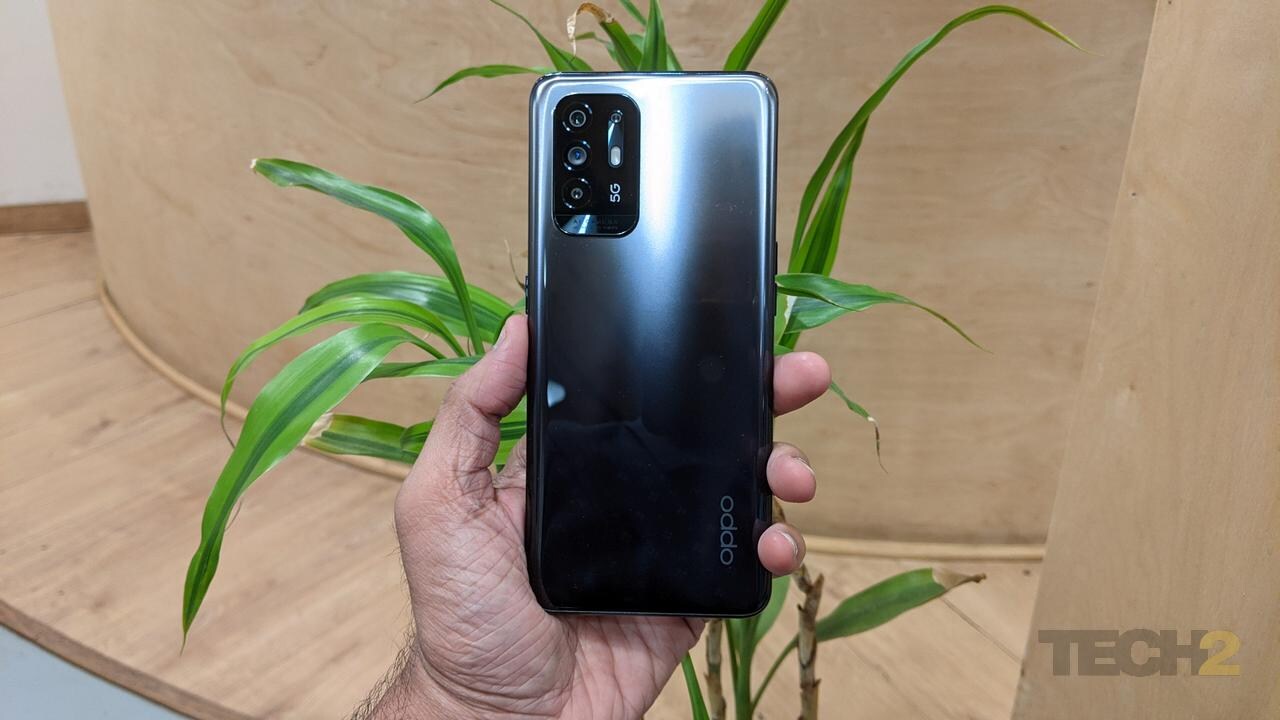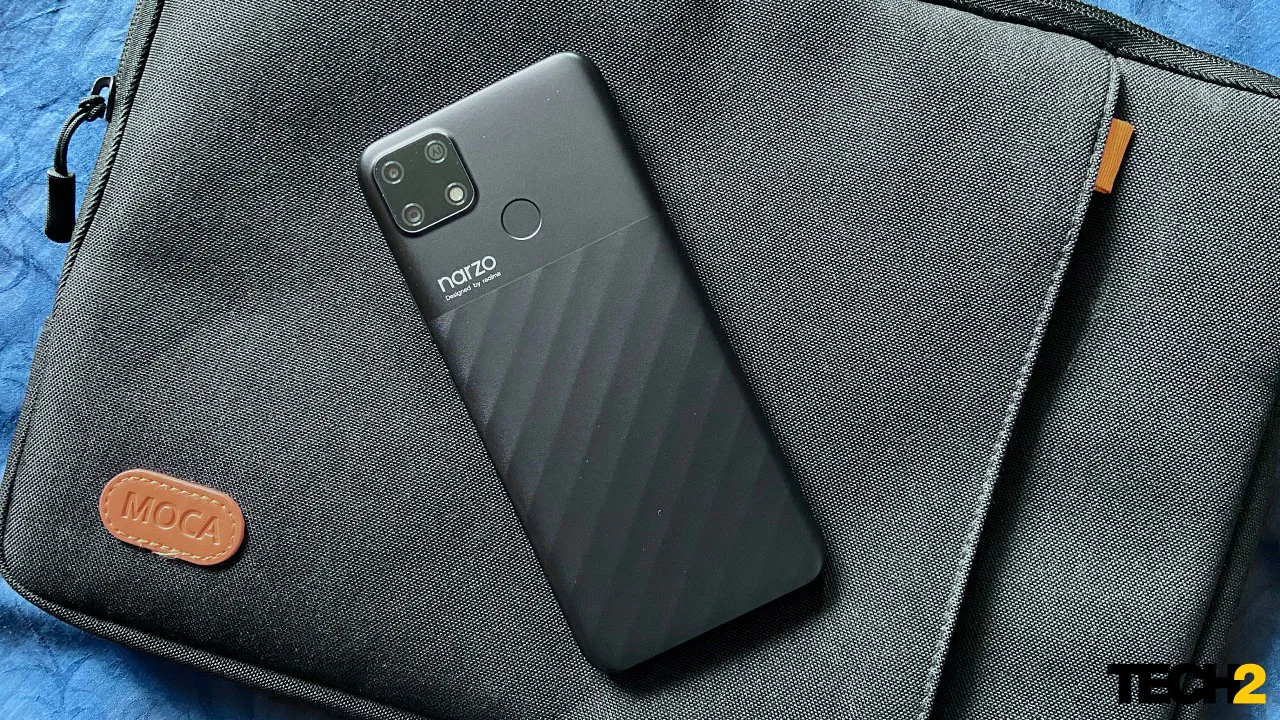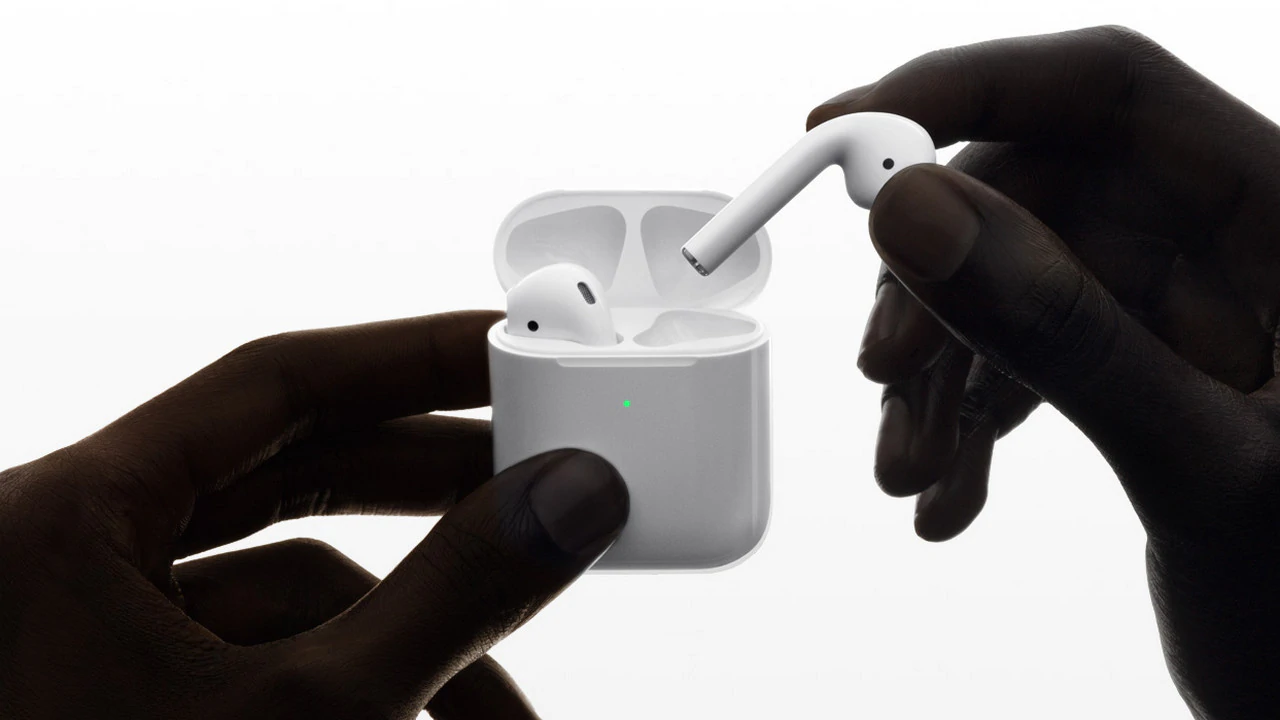Oppo released the upgrade to its F-series phones, the F19 Pro series this month along with a fitness band called the Oppo Band Style. It replaces the F17 Pro and offers a different camera module design from the one seen on its predecessor. The focus with the F19 Pro and F19 Pro+ is the camera, especially the “AI Highlight Portrait Video” and 50 W “Flash” charging.

Oppo F19 Pro+. Image: Tech2/Nimish Sawant
The Oppo F19 Pro+ comes in one variant – 8 GB RAM + 128 GB storage – which is priced at Rs 25,990. The F19 Pro comes in at Rs 21,490 onwards. Let’s see if this phone is worth your money in a price bracket that has stiff competition.
Build and Design
If there is one thing that you can expect from Oppo, it’s their experimentation with form factors and sleek devices. After testing the Oppo F17 Pro last year, one thing that stood out was how slim the phone was. The Oppo F19 Pro+ carries forward that tradition at just 7.8 mm thickness, and also sports an impressive dual-tone back. It’s also light at 173 grams.
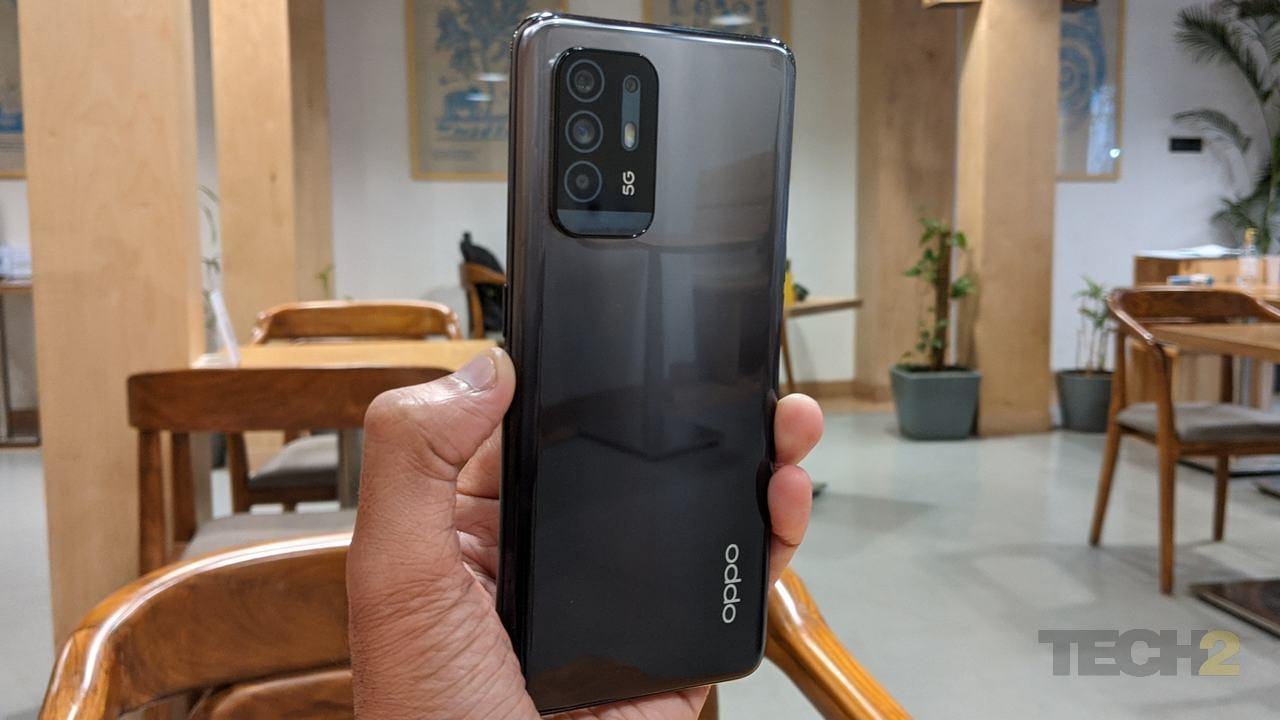
The back of the Oppo F19 Pro+ does tend to collect fingerprint smudges, which are easily removed. Image: Tech2/Nimish Sawant
The camera module, placed in the top left-hand corner, protrudes slightly but thankfully, has rounded edges. The back looks good and the camera module also carries a fair bit of branding such as “5G”, “AI Camera Ultra Night Vision”. The “fluid black model” I received for testing does have a slight grip on it, with some assistance from the curved edges. The back is made of plastic and is not as slippery, but if you’re feeling nervous about it, Oppo does bundle a transparent silicone cover. While it does increase the thickness overall, there is a lot more grip to the phone and the edges are slightly raised, so as to protect the display from falls. The back of the Oppo F19 Pro+ does tend to collect fingerprint smudges, which are easily removed. The dust collection around the camera module is a bit trickier to clean though.
There’s a glossy plastic frame that tends to collect smudges as well. The power/standby button is placed on the right-hand side and the volume rockers are placed on the left-hand side. Just above the volume rocker, you have the dual SIM + microSD card tray. The top edge just has the microphone and at the base, you have the USB Type C charging and data transfer port, surrounded by a speaker grille and a 3.5 mm audio jack.
On the front, you have a 6.43-inch display with a punch-hole camera placed on the top left corner. This is a departure from the dual-front-facing cameras seen on the Oppo F17 Pro. The earpiece speaker is neatly concealed, but one does notice a chin at the base.
Overall, it’s a pleasant design, but nothing that will make others stop to take notice. The phone doesn’t come with any IP certification.
Specifications
Display: 6.43-inch punch-hole display with FHD+ resolution
Chipset: Mediatek Dimensity 800U (2x Cortex A76 @ Up to 2.4 GHz + 6x Cortex A55 @ Up to 2 GHz)
Graphics: Mali-G57 MC3
RAM + Storage in GB: 8 + 128 GB
Expandable storage: Yes, up to 256 GB
Cameras: 48 MP with f/1.7 aperture + 8 MP ultrawide camera with f/2.2 aperture + 2 MP Macro with f/2.4 aperture + 2 MP depth camera with f/2.4
Selfie Camera: 16 MP with f/2.4 aperture
Battery: 4,310 mAh
Software: Android 11 with ColorOS 11.1
Colours: Fluid Black, Space Silver and Cosmo Blue
Display
Sporting a 6.4-inch Super AMOLED display with Corning Gorilla Glass 5 protection, the Oppo F19 Pro+’s display has an FHD+ resolution and you get a pixel density of 409 PPI. The Oppo F19 Pro+ skips a high refresh rate and sticks to the standard 60 Hz. It seems a bit odd at the price point it’s selling at, but if you haven’t used a higher refresh rate display before, you won’t notice. Barring a slight slowness when scrolling Instagram and Twitter, I didn’t find the refresh rate to be lacking in any way.
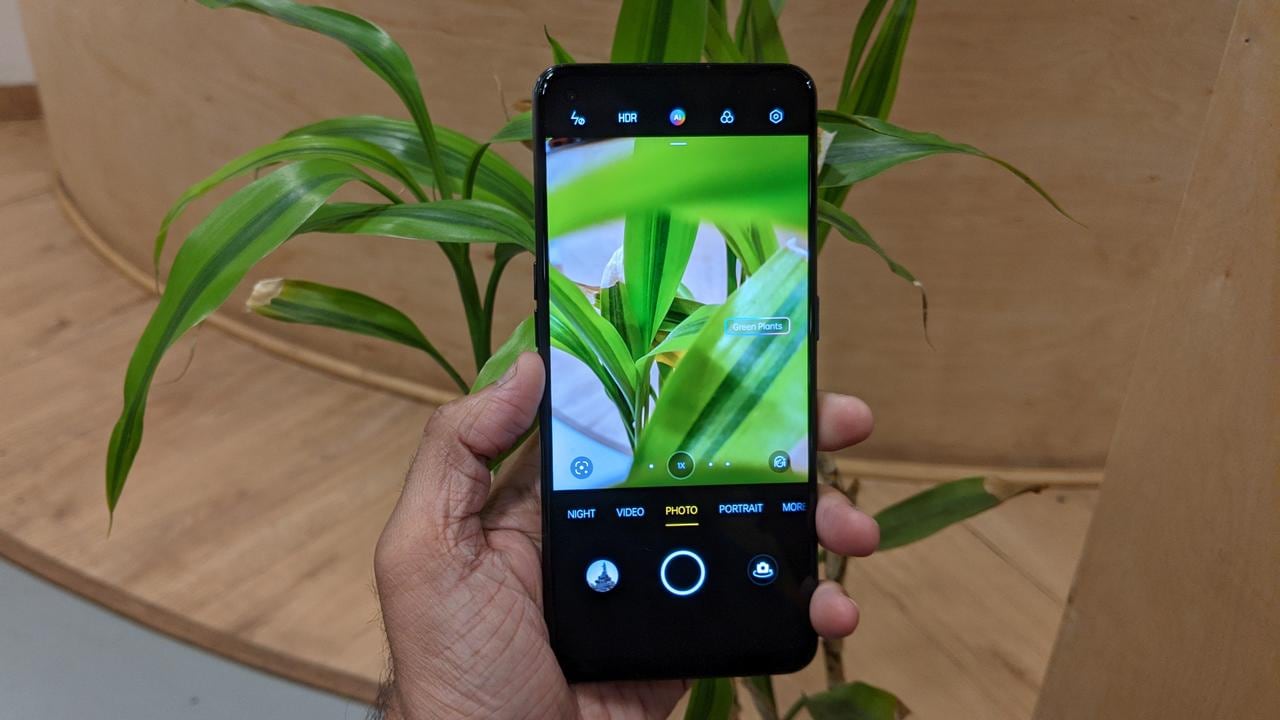
Oppo mentions a peak brightness of 800 nits and typical brightness of 430 nits. Image: Tech2/Nimish Sawant
I wasn’t too pleased with the auto-brightness mode, and kept the brightness at around 60 percent and up for comfort. Oppo mentions a peak brightness of 800 nits and typical brightness of 430 nits. Thanks to the Super AMOLED display, the contrast on it is good, blacks are deep and it’s fun to watch video content on the display. Games such as Call of Duty Mobile, Alto’s Odyssey look good, but you can’t play these games at their extreme settings. I didn’t find much to complain about in the display. The lack of a high refresh rate could be a bone of contention for many potential buyers.
Performance and Software
The Oppo F19 Pro+ uses the MediaTek Dimensity 800U chipset, which supports 5G. This is the first smartphone I am testing with the Dimensity 800U chipset, and if one were to benchmark it with a Qualcomm part, it is comparable to the Snapdragon 750 / 765 series chipsets. It’s meant for mid-range devices, so you need to keep your expectations in check.
Paired with 8 GB RAM, you don’t get the highest benchmark scores. Did I find the device to be slow in real-life usage? No. Did I come across stuttering? Yes, every once in a while. But, over the 10 days that I used it, I didn’t find the performance lacking or any different from other comparable smartphones from this segment we’ve tested.
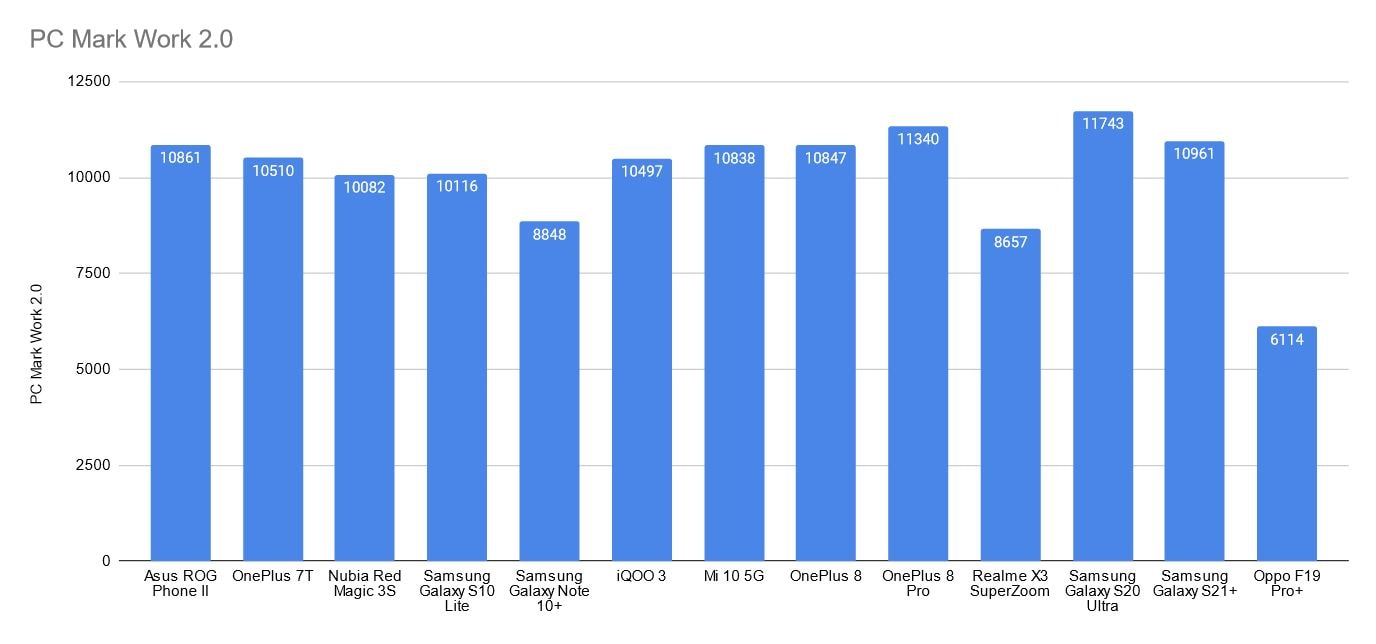
PC Mark
One side-effect of having a mid-range chipset is that when it comes to gaming, your graphics settings will be locked to medium or high. For instance, on Call of Duty Mobile, the highest graphics setting was Medium. While the game ran smoothly, it wasn’t at its visual best. Honestly, I don’t mind the trade-off for this price, as gaming was smooth at these settings and the phone didn’t get too hot to hold either. On balance, this is good.
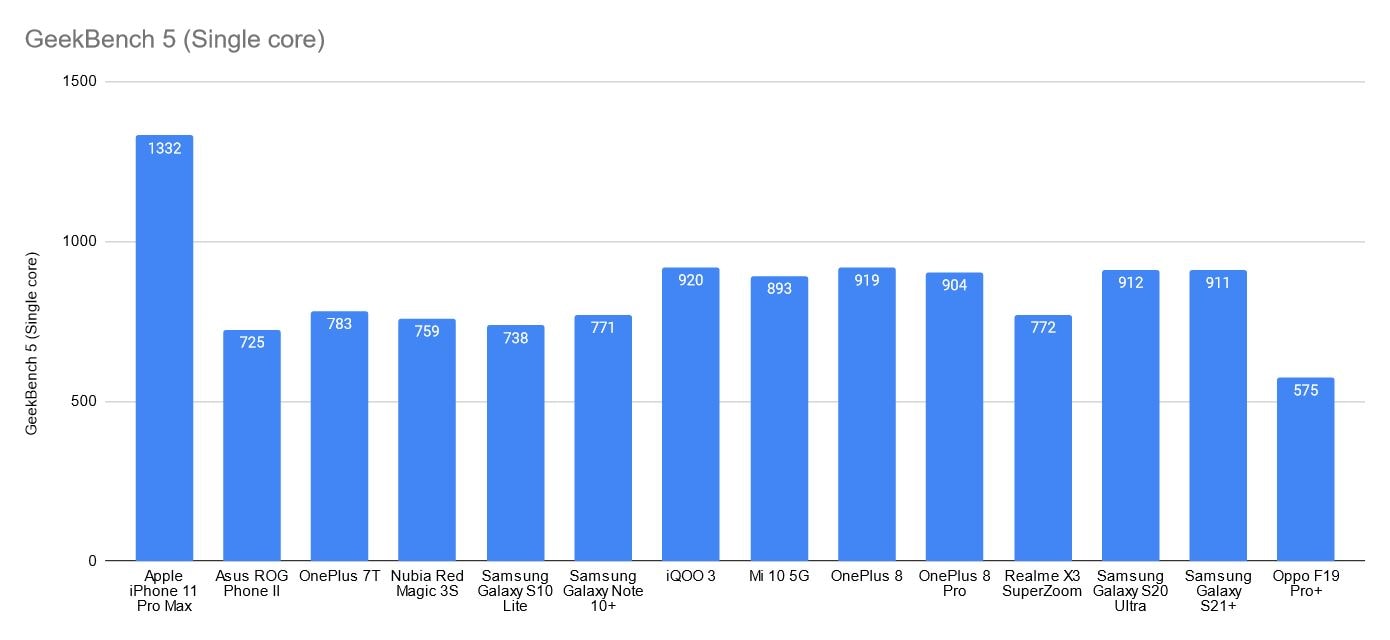
Geekbench Single Core test
The phone comes with an SoC that supports ‘smart’ 5G, which supports not just dual 5G SIMs but also easy switching between 4G and 5G. Of course, that shoulnd’t be a deciding factor to buy this device. I am quite sure Oppo itself will release another upgrade to the F-series before 5G becomes mainstream in India. It’s a great marketing term for now, but has zero practical value in the real world. The phone comes with a fingerprint scanner, which is decent but not the quickest.
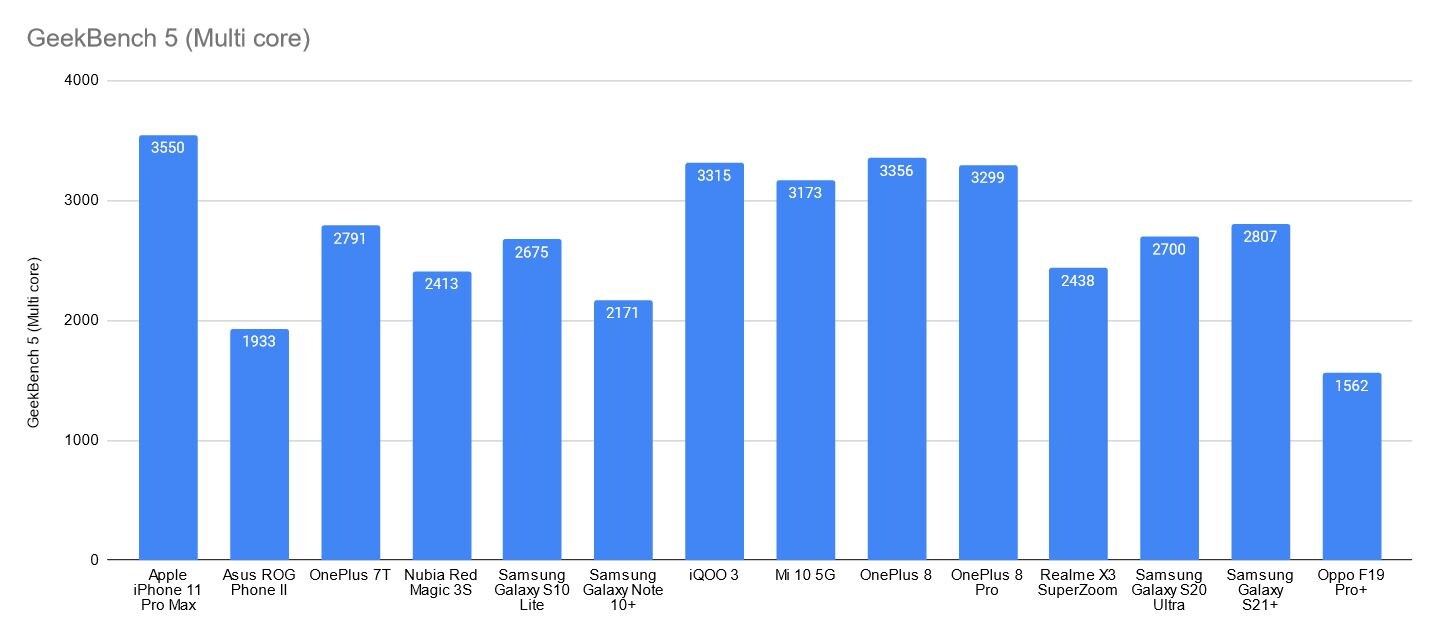
Geekbench Multi core
The earpiece speaker is loud and clear and I didn’t face any issues with calls. The primary speaker does tend to get blocked when you are gaming. Overall, the speakers aren’t the loudest. Oppo bundles a decent pair of earphones, which more than makeup for the average speakers. The call quality was flawless.
On the software front, it comes with Android 11 with ColorOS 11.1. The UI is quite responsive and there weren’t any issues with botched animations or transitions. The software has been upgraded since I had tested the Oppo F17 Pro, and it’s good that Oppo has decided to call it ColorOS 11 in line with Android 11 – it’s much easier to keep track of.
ColorOS 11.1 adds some finesse atop the previous ColorOS 7.2. You now have floating notifications and a quick settings menu which let you adjust the settings for Wi-Fi, Bluetooth and Do Not Disturb (any setting which has a downward pointing arrow beside its name). The ‘Personalisation’ feature lets you change your themes, wallpapers, icon styles, app layout, the way the fingerprint logo appears during unlocking, fonts and more. You can even make cool, minimal custom wallpapers, and even your own ringtones. You can change the shape of the app icons, increase or decrease the number of apps you can see on the home pages, drop an entire folder into another and also quickly degroup with the tap of a button. The “Game Space” mode lets you tweak certain settings for notifications, messages, calls and even switch between performance modes. There are many other features that you will discover, as you continue using the phone.
You also get ColorOS’ “Hey Tap” Cloud service to backup your device. Oppo has also incorporated ‘Air Gestures’ for interacting with your device; you can wave a hand over the phone to pick up a call, swipe through the gallery and so on. Honestly, these are gimmicky and I tried them to some success, with average responsiveness. I never used them in my day-to-day usage.
Camera
The Oppo F19 Pro+ comes with a 48 MP Omnivision OV48B sensor with an f/1.7 aperture; and an 8 MP ultrawide angle camera with f/2.2 aperture. The other two cameras are mere show-pieces with a 2 MP resolution for mono and macro shooting. On the front, you have a 16 MP camera with an f/2.4 aperture.

Portrait mode works well with human faces, but good luck shooting a decent portrait photo of your pets. Image: Tech2/Nimish Sawant
Daylight photos turned out well, with accurate colours. Turning on the AI mode does tend to oversaturate the primary colours, but one’s mileage may vary on that. I didn’t notice much colour shifting when switching between the primary and ultrawide angle camera, and the purple fringing was well-controlled on the primary. The photos show decent dynamic range. Portrait mode works well with human faces, but good luck shooting a decent portrait photo of your pets. The edge detection is a bit of a hit-and-miss. Selfies come out well, as long as the beautification mode is set to zero (at least for me).
Click here to see the camera samples:

For the ‘Night’ mode for still photos, Oppo has added three filters to make your night photos stand out. These are ‘Cosmopolitan’, ‘Astral’ and ‘Dazzle’, which like most filters, manipulate the colours in the actual scene. ‘Dazzle’, for instance, tends to enhance the warmer colours to make cityscapes under artificial light stand out. Even with the ‘Portrait’ mode, you get filters such as “AI Colour Portrait” which keeps the subject in colour with a monochrome background, “Neon Portrait” mode which works best if there are shiny lights in the background and “Dynamic Bokeh” which is the best of the three, letting you click photos like this. Please note that Oppo has kept the beautification mode at 40 percent by default, so adjust that if you don’t like overly-smooth photos.
Night photos come out pretty decent, as long as you are using the primary camera. Yes, you will notice over-aggressive smoothening if you pixel-peep, but for sharing on social media platforms, the noise levels are well controlled. The ultrawide angle camera is quite average after sundown, and I would avoid using 5x zoom, which just produces a digitally-zoomed, blotchy mess of an image. The various AI filters work well, provided you don’t apply them to every situation. There is a slight bit of delay after you click a photo in the ‘Night’ mode, as the camera processes it. However, I was glad that unlike the Samsung Galaxy flagships I tested recently, I didn’t have to hold my breath every time I turned on the ‘Night’ mode. I guess a 48 MP sensor producing 12 MP pixel binned images helps there. Selfies taken in low light are not the best, as noise is noticeable even without pixel-peeping.
Coming to the video shooting modes, the Oppo F19 Pro+ can shoot up to 4K at 30 fps. Use this mode only if you will have your phone steady, as walking and shooting leads to jerky footage. When you activate the “Ultra Steady” option, the resolution is restricted to 1080p/30fps. While you get relatively steady footage, you also notice noise creeping in. Shooting after sunset leads to noisy footage overall, especially when shooting cityscapes. The “AI Night Portrait” mode was impressive, and it does tend to increase the overall brightness on the face. However, noise also becomes noticeable when shooting with this mode. On the whole, it’s a decent tradeoff.
You get the dual video, which is a great option for vloggers and lets you shoot with the front and rear camera at the same time, with three layout options. You can switch between the normal and zoom modes on the rear camera, but do note that it will be digital zoom.
Battery life
The Oppo F19 Pro+ houses a 4,310 mAh battery, which is a decent configuration for a phone that’s so slim. And given the fact that Oppo bundles a 50 W “Flash Charger” in the box, means that you really don’t have to worry much about charging times – they are wicked-fast. I was able to charge my phone from 0-100 percent within 55 minutes. Just 25 minutes of charging took it from 0-50 percent. Hell, even 15 minutes of charging will give you enough battery to last you for five hours.
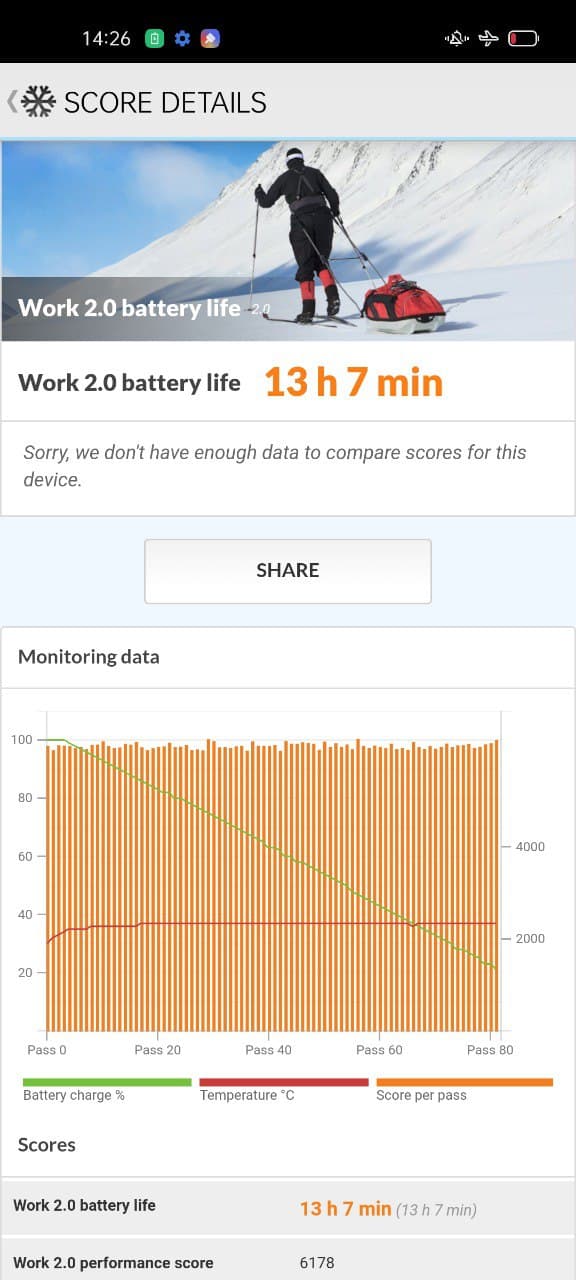
PC Mark for Android delivered a score of 13 hours 7 mins. In real-world usage, I could easily get a little over a day of regular usage. Playing heavy games such as Call of Duty Mobile does take a toll on the battery life. 30 mins of gaming with the highest settings (locked to Medium) drains the battery by 12-15 percent. But like I said before, even if the battery drains within a day, all you have to do is plug in the phone to charge and in the time it takes you to make coffee and enjoy it, you will have more than enough charge to last you for the next few hours. I did not notice the phone get unbearably hot while charging. For those who plan to charge the phone overnight – don’t. Yes, Oppo does give you the ‘Optimised night charging’ which spreads out the charging speed to avoid overcharging, but it’s best to charge it only when needed rather than for multiple hours.
Verdict and Price in India
I wasn’t completely sold on the Oppo F17 Pro when it had come out. It looked great, but there were too many compromises. The Oppo F19 Pro+ certainly corrects a lot of those compromises and also offers interesting camera features. Sure, low light photography and videography isn’t the F19 Pro+’s strongest suit, but the output is usable. The display, everyday performance, battery life on the F19 Pro+ are decent, but at the asking price of Rs 25,990, this isn’t an easy phone to recommend.
Competition lingers in the form of the Vivo V20 Pro which excelled in many more departments; the not-so-old OnePlus Nord (Review) is also an able phone. Then one also has to consider upcoming devices such as the Poco F3/Redmi K40 and Realme 8 Pro. Unless you want to buy the Oppo F19 Pro+ right away, I’d suggest waiting for the new launches. If you already own an Oppo F17 Pro, you can skip the F19 Pro+.
Find latest and upcoming tech gadgets online on Tech2 Gadgets. Get technology news, gadgets reviews & ratings. Popular gadgets including laptop, tablet and mobile specifications, features, prices, comparison.

